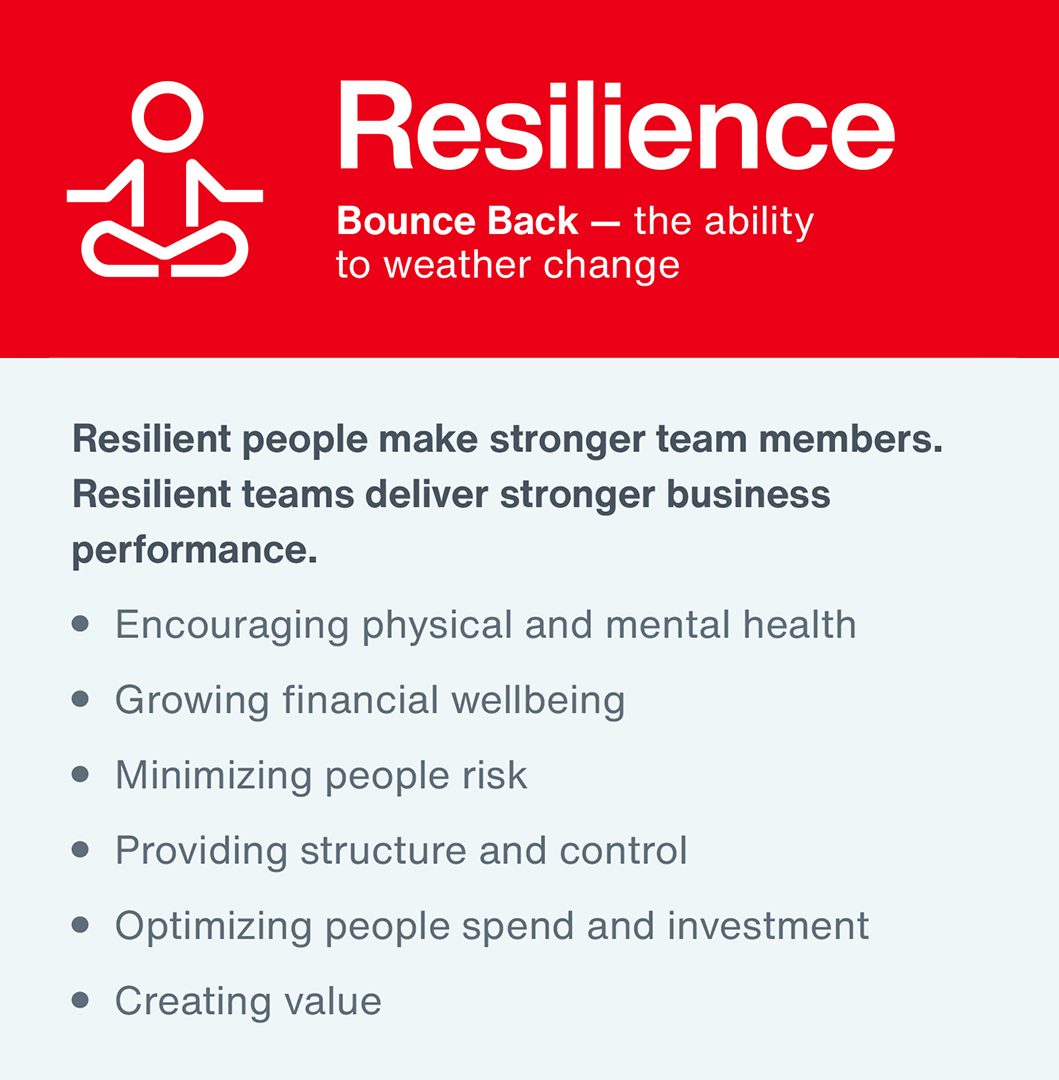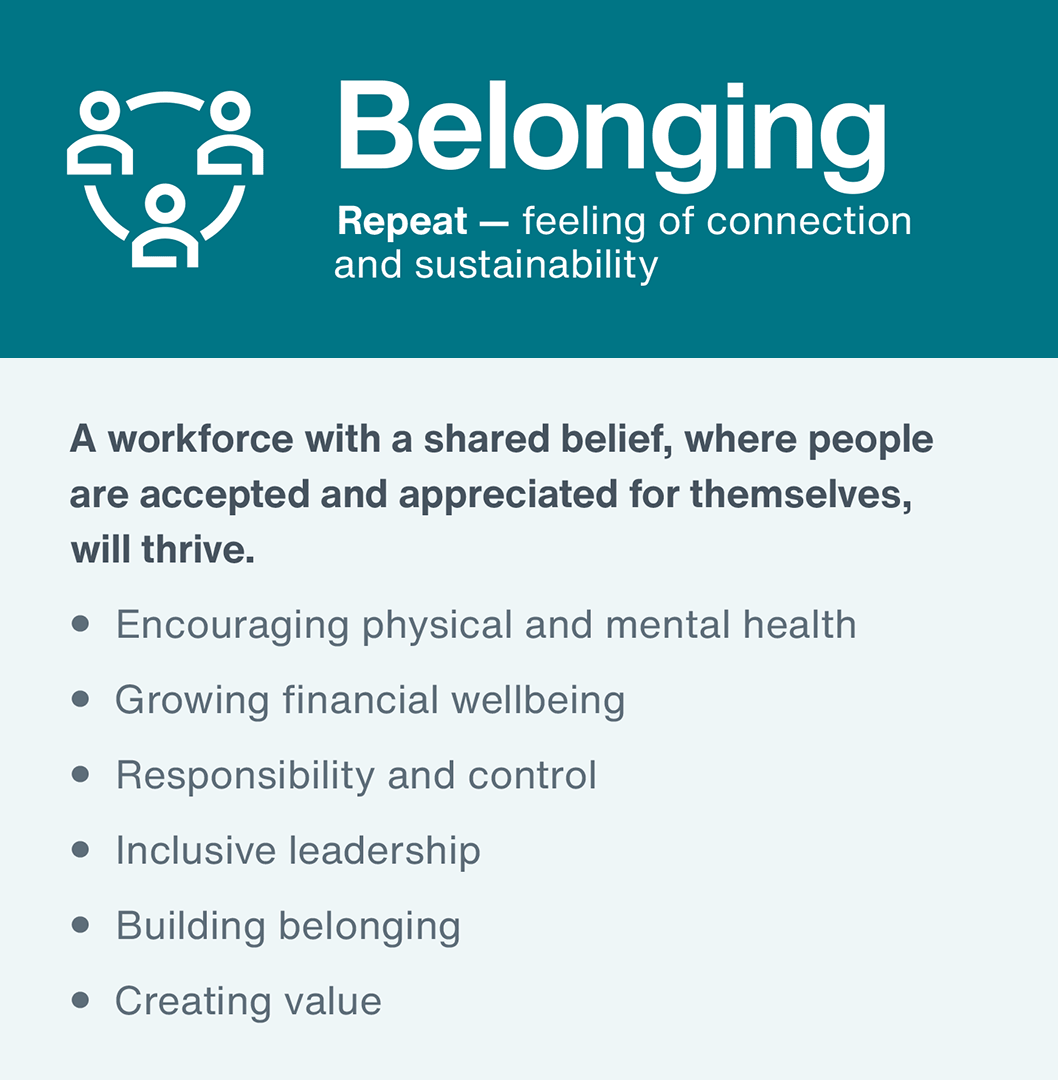
Measure Workforce Resilience for Better Business Outcomes
Measuring Workforce Resilience for Better Business Outcomes
Why Workforce Resilience Matters
Aon’s Workforce Resilience Model identifies and recommends actions to build resilience, agility and belonging. Watch this short video for an overview of the model and an example of how it can create a Return on Investment for workforce resilience.
A resilient workforce is one that can withstand the unpredictability of the current economic and business environment and emerge stronger. This ensures organizations continue to deliver value for key stakeholders.
The Link to Business Performance
Business performance and workforce resilience are intertwined. Organizations need to support employees so they are adaptable to change and can navigate their way through volatility. When the resilience of a workforce rises, so does client satisfaction, profit margin, innovation, net promoter scores and employee retention, according to data from Aon’s Rising Resilience Survey.
Improving your sustainable working life — which includes resilience, agility and belonging — has the potential to increase company performance by at least 11 percent and up to 55 percent, according to Aon’s 2022–2023 Global Wellbeing Survey.
Impact on Talent Strategy
The case for the C suite owning talent strategy has never been stronger. How to attract, hire and look after the talent needed for success should be considered within broader business decisions. Our model to measure workforce resilience provides specific and clear road maps to boost resilience, while generating specific returns on growth and investment.
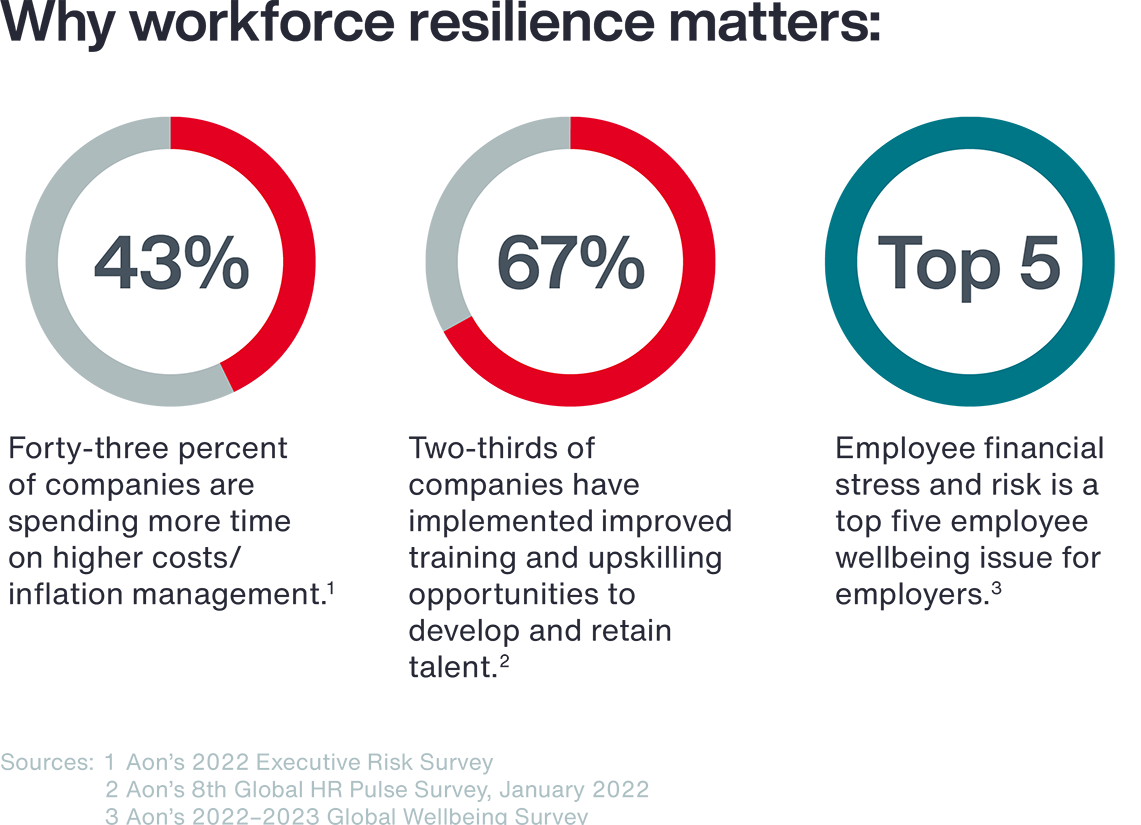
A Model for Measuring Workforce Resilience
Organizations can build workforce resilience by devoting time and resources to weathering change (resilience), bouncing forward from disruption (agility) and fostering an environment where employees feel appreciated, allowing them to thrive (belonging).
These three pillars underpin how we understand workforce resilience. Getting it right helps organizations articulate and create a strong employee value proposition and ultimately a sustainable working life for employees.
In each of these three pillars, there are identified metrics that can measure how well an organization scores in each area and against peers. Some of these metrics overlap into multiple areas, but all 12 of them map up to an overall workforce resilience score.
Let us explore each of these three areas and the metrics that measure how well an organization is doing. First, we consider the resilience of your collective workforce.
Measuring the RESILIENCE of Your Workforce
Businesses that put their people first are more likely to thrive. By creating a workplace environment that provides security, motivation and support, employees and the business are better able to withstand uncertainty and disruption.

Measuring the AGILITY of Your Workforce
Organizations that invest in impactful programs, while both measuring progress and managing risk, can build a diverse, inclusive and agile workforce.

Measuring the BELONGING of Your Workforce
Ensuring employees feel a sense of belonging in the organization contributes to a sustainable working life and both personal and professional growth.
It provides a voice and an opportunity for everyone regardless of role or rank. Belonging also supports wellness while driving diversity and innovation. But our Rising Resilience survey data finds 52 percent of employees do not feel a sense of belonging from their workplace. Furthermore, 40 percent of employees say that they feel isolated at work, resulting in lower engagement and organizational commitment.
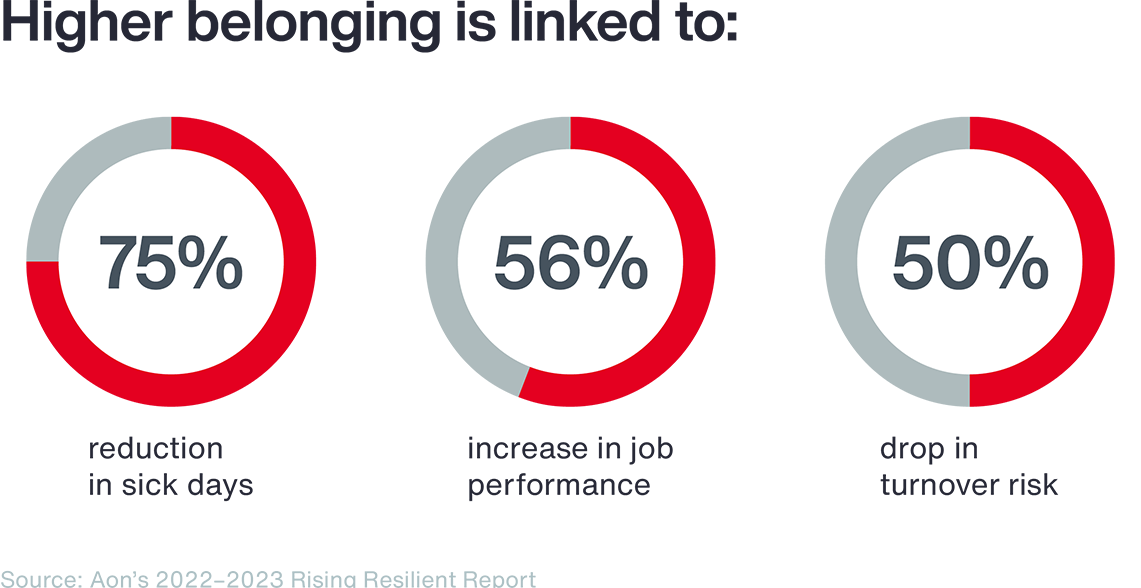
Organizations need to bring it together. There are a lot of different factors that can deliver workforce resilience, but understanding how they are interconnected helps create maximum value for an organization.
Aon’s Workforce Resilience Model
Our research and data measure the resilience of your organization based on 12 primary factors underpinned by 21 data points. These points are based on an organization’s own data and benchmarked against a custom peer group. Our model contains workforce data from more than 3,000 organizations across 15 sectors. The process identifies specific areas to improve and aligned actions to take.
Improving one of the 12 factors of workforce resilience can have knock on effects. Oftentimes, recommended actions to improve workforce resilience will overlap. For example, improving the efficiency of an organization’s layers and spans can improve scores across multiple factors of workforce resilience, including optimizing people spend, providing structure and inclusive leadership.
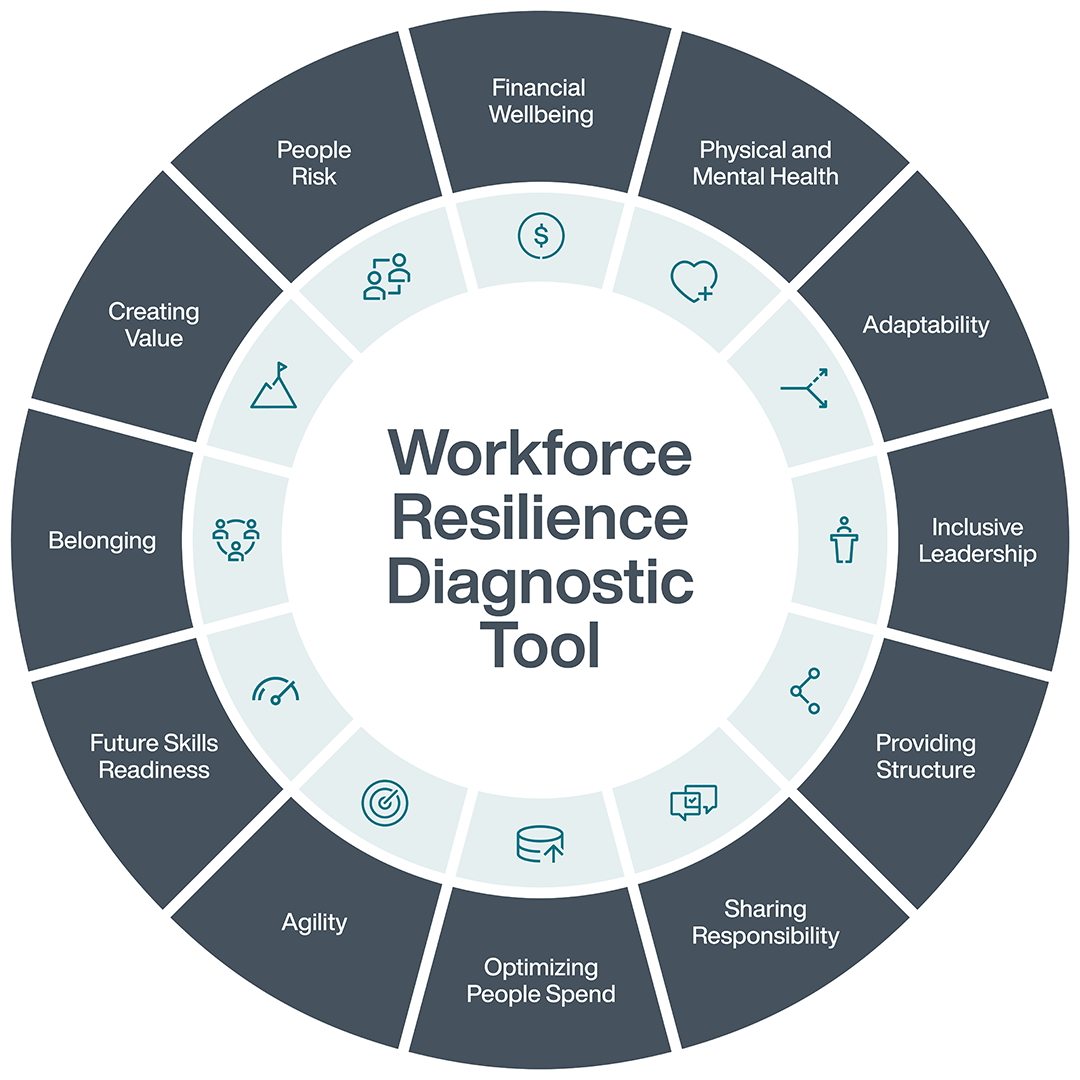
Find out more about the impact of workforce resilience.
